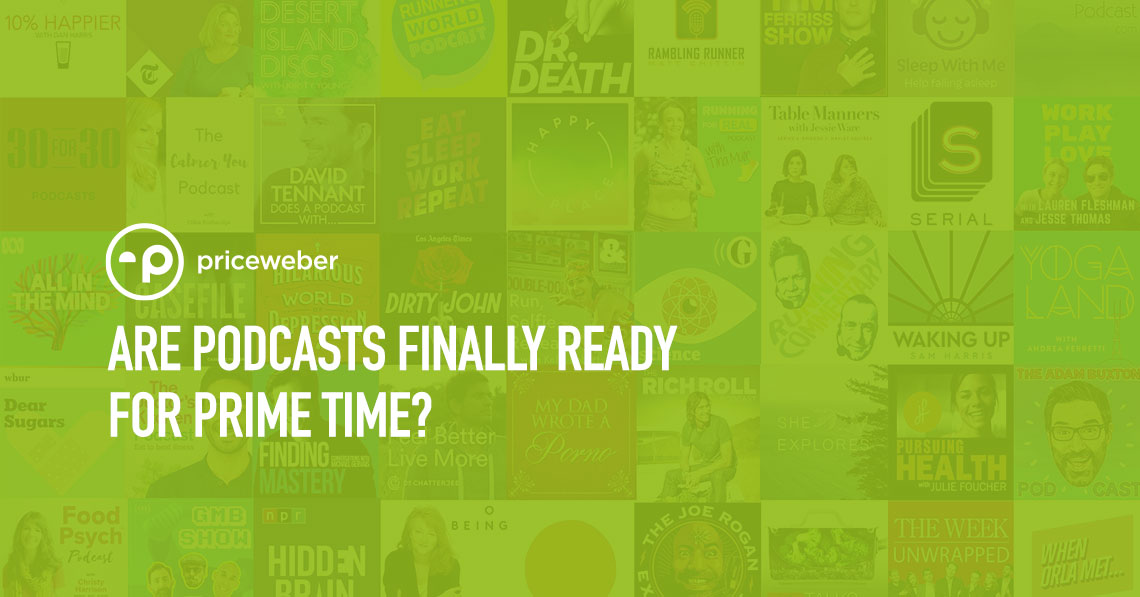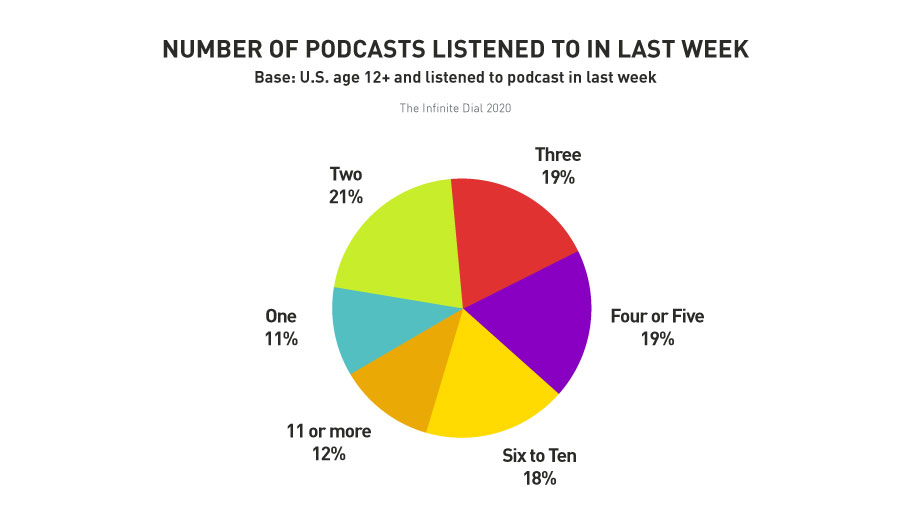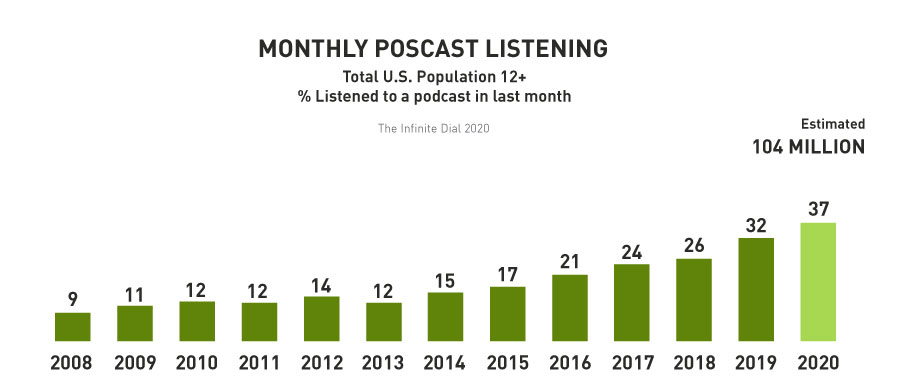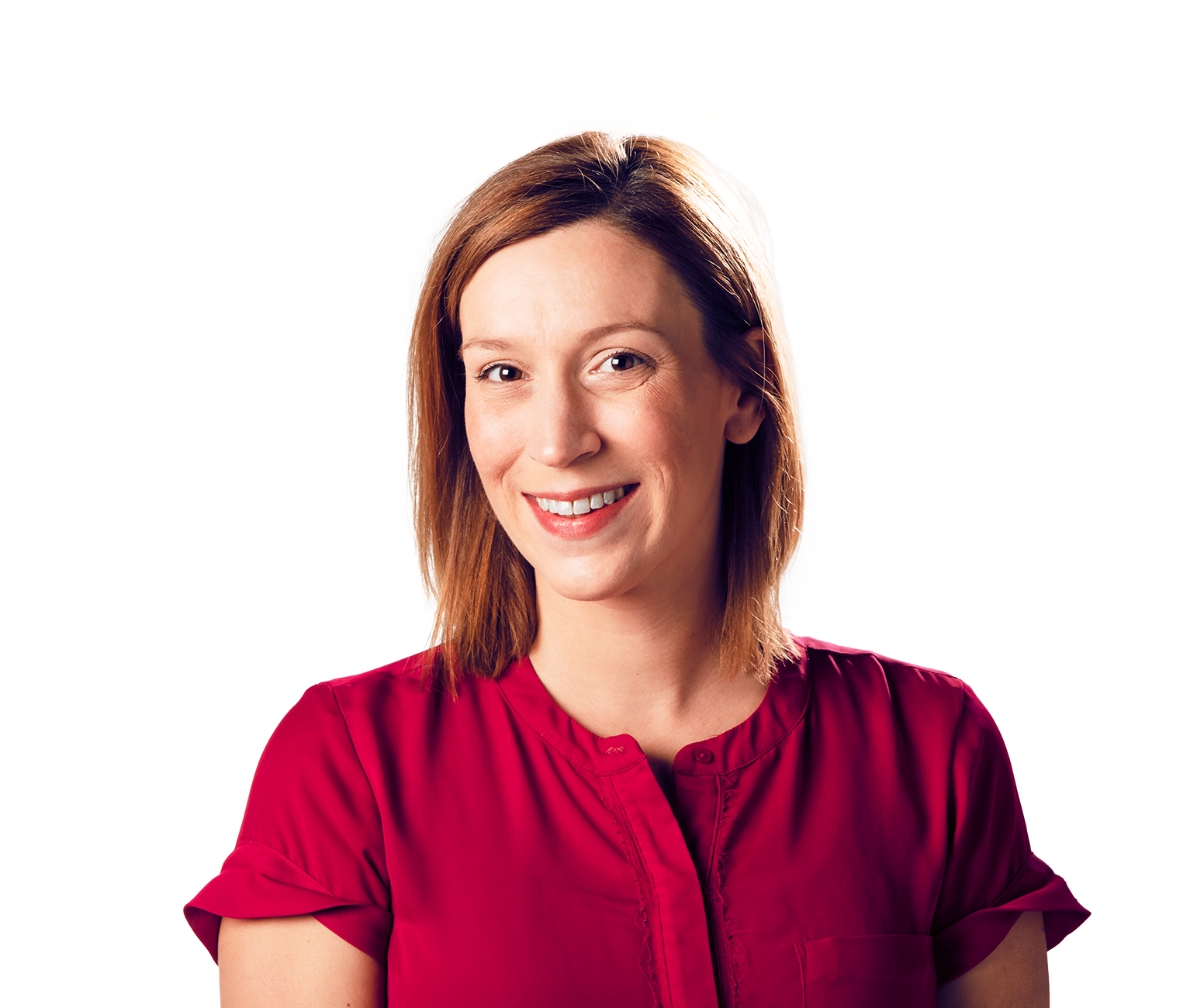Podcast advertising has recently become a hot topic among brands and media planners. In today’s PriceWeber Plain Talk post, we’ll talk about why the medium is growing, some reasons it might be time to consider adding podcasts to your media strategy and some of the best practices for podcast advertising if you do.
The technology behind podcasts became available to listeners in 2003, with the actual term “podcast” coined in 2004. Credited to former MTV VJ Adam Curry and software developer Dave Winer, podcasts are generally free, pre-recorded audio shows that you can listen to anywhere, on demand. In 2005, Steve Jobs referred to podcasts as “the future of audio,” and for a while, interest in podcasts by consumers and the marketing industry was intense. However, while the format was lauded as the next big thing, consumer adoption and the scale required for media monetization didn’t really materialize, and many of us thought the podcast was destined to become a resident of the technology junk heap next to the Apple Newton and the Zune MP3 player.
What our industry failed to realize was that for the next decade, a slow and steady groundswell of loyal podcasters and their listeners were building the critical mass that the medium lacked early on. Then in 2014, the podcast universe had its first megahit, the true-crime drama called “Serial.” Suddenly the ad industry was talking about the resurgence of podcasting, but in truth, it was never gone. Just growing quietly.
Today, according to eMarketer, podcast listening makes up 17% of total daily time spent listening to digital audio. That figure is forecast to continue to grow 19% in 2022. These listeners are highly loyal and consume a high volume of content. According to Edison Research’s The Infinite Dial 2020 report, 104 million people listened to a podcast in the last month and 24% in the past week. On average, these people spent an astonishing 6 hours and 39 minutes each week listening to an average of 6 podcasts.
Additionally, while digital radio is showing double-digit declines in ad spend, podcast ad spend is expected to increase 10% this year and is expected to jump to over $1 billion in ad spend in 2021.
So why the growth after all this time? Until recently, podcast advertising has been more of an experimental spend in media plans. But with growth in high-quality programming, some high-profile hits to spark renewed national interest and growing loyal audiences, marketers are now looking to podcasts as a new high-attention, hyper-targeted consideration in the digital audio space. A huge hurdle to making the leap from experimental medium to the mainstream was the addition of increased targeting capabilities along with IAB-released guidelines (in 2018) establishing a standardized set of ad metrics. This ultimately gave advertisers more confidence in their spend, and improvements from digital ad platforms made podcast advertising campaigns easier to plan, buy and measure at scale.
How Can We Use Podcasts?
While podcasts are sometimes used for brand awareness, the majority of podcast advertising is direct response focused and is baked into the conversation and/or host-read instead of dynamically inserted (once the podcast is downloaded or streamed). Only 4% of ad spending is purchased programmatically, though that is starting to change as Spotify and others are working to increase scale and reach with more automated buys.
Ways to integrate advertising with podcasts:
- Pre-Roll, Mid-Roll or Post-Roll: Ads are placed at the beginning, middle or end of a podcast. The beginning and ending spots are usually 15-30 seconds, while the middle spot can be a bit longer.
- Sponsorships and Partnerships: The benefit of working directly with a show or group of shows is that you can leverage the following the host(s) has developed. Many hosts will only promote products they believe in or are a good “fit,” much like influencer marketing you might see on social media. Some podcasts have pre-set sponsorship opportunities, but there is always an opportunity to work with a host to develop a mutually beneficial partnership.
- Even our B2B clients can take part in podcasts effectively. Depending on the product, pure advertising may not be the best fit – but maybe a guest appearance would be more beneficial at establishing authority and thought leadership with a desired audience.
- GE and eBay have both created branded podcasts. eBay’s “Open for Business” explores the ins and outs of building a company.
- Dynamically Inserted Ads: Sometimes considered less engaging, dynamically inserted ads can allow for greater targeting if you want to reach a specific audience or geography. Some platforms allow you to target demographically, or you can target by keywords to identify relevant programs to run your ads.
As with any good media component, the strategy in how you use the vehicle is key. So how can you ensure your dollars are well spent in an effective way that actually drives results? We’ve identified a few keys to success:
1. Targeting is Key
Whether you DIY or work with a network, you have to be sure that you are reaching the right audience. Podcast listeners are very loyal, remember ad messages and find them engaging – when they fit with the audience and the program. Identify whether the host and the listeners fit your desired demographic and whether the program makes sense for your product. Particularly when using the host as an influencer, it can’t feel forced or it won’t have the desired effect. You don’t always have to go for the biggest podcasts – in fact, some of the smaller shows will provide even more customization and partnership opportunities, and you may find an even more loyal audience here.
Some big advertisers understand the importance of aligning targeting and content. Zip Recruiter ran on 66 podcasts, but the largest number of ads were on Pod Save America, The Daily and The Ben Shapiro show, where hosts discussed how Zip Recruiter helped them find work. Zoom focused on dynamically inserted ads mostly on Economist Radio and The Intelligence.
2. Trust the Host
The host is the star of the show and they are the reason for such a loyal group of listeners. Sometimes brands should work directly and drop the script. Instead, provide actionable bullet points the host can use to craft a message he believes in. Not only is it more authentic, it tends to drive better results. However, in doing this, the brand may have to sacrifice some element of brand safety, just as you would in any other form of influencer marketing.
The podcast “Conan O’Brien Needs a Friend” is an example where he either makes fun of the advertiser or himself in some way (sometimes starting his ad segments as “Conan O’Brien Pays Off The Mortgage On His Beach House”), but it’s good-natured fun and done in a way that makes the ad read more enjoyable – more like a segment than an interruption.
3. Test Performance and Refine Approach
Dynamically inserted ads may lend themselves best to typical A/B tests. You can (and should) test your ad positions, test your audiences (maybe one group of listeners is more responsive than others) and test your messages. You can even test between host-read and dynamically inserted ads. Even with host-read messages, allow the host to make tweaks and try different things.
In order to effectively test, you need to ensure you have the measurement tools set up to capture data and make decisions. Promo codes, vanity URLs or checkout surveys are good ways to track offline conversions for a direct response campaign. For brand awareness, you want to work with your team to look at social media engagement, website visits and social traffic.
4. Consider the Full Funnel
Many third-party tools allow you to track results using pixel-based attribution. While this can help with measurement, it can also help move more potential consumers through your sales funnel. By using the pixel, you can develop a sequential messaging strategy by using display or video ads to retarget people (on social or online) with additional information.
5. Be Patient
Because most podcasts are still downloaded (though some are streamed), there can be a lag between the start of advertising and the realization of sales results. Be patient – it may be a slower build, but with the loyal and engaged audience, it’s likely to pay off in the long run.
Need More Information?
To find out if podcasts are right for your brand or for more information about how to leverage podcasts to differentiate and enhance your media strategy, contact us here or give us a call at 502-499-4209 to get some time on Mary Kate Reed’s schedule.




